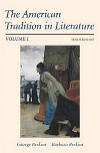Jean Toomer was born in Washington, D.C. in 1894. He attended college at the University of Wisconsin and New York City College. Following his studies in New York, he worked as an editor for The Liberator, Broom, and The Little Review. He moved to Georgia, the home of his father, where he taught school for less than a year, after which time he moved to Harlem in New York. There he composed the poetry that filled his volume, Cane, a distillation of memories and reflections on his experiences as a Black man in Georgia. Attracted to the philosophy and religious tenets of "Unitism" and its European teacher and guru, the Russian mystic Georges Ivanov Gurdjieff, Toomer traveled to Preuirè, France, where he entered a physical, spiritual, and psychological regimen of training he was not sure he could finish. He did finish, however, but nevertheless he returned to the United States to proselytize his new faith in Harlem. At the suggestion of his mentor, he left New York for Chicago to set up a training school there. While in Chicago he began a commune in nearby Portage, Wisconsin, to put into practice the teachings of his mentor. It was there he met Margery Latimer. A charismatic personality, Jean Toomer always attracted a following that included a number of women who became both friends and occasional lovers. He married Margery in 1931, and soon afterward, Margery became pregnant. However, their happiness was short-lived when Margery died in childbirth. After Margery's death, Jean Toomer moved to Carmel, California, where he wrote Portage Potential, a didactic work on his experiences in the commune. He traveled throughout the American Southwest and ended up for a short time in Taos, New Mexico, where he met Mabel Dodge Luhan and artist Georgia O'Keefe with whom he had a brief romantic affair. They would be friends for life. In 1934, Jean Toomer met his second wife, photographer Marjory Content, in a Quaker enclave in Pennsylvania. They were married in September, 1934, in Taos in the home of Mabel Luhan. They then travelled in a long journey of spiritual renewal, in and out of the circles of Gurdjieff for whom Toomer yearned to be his primary disciple in the United States. At times, he posed as a spiritualist himself, adopting the mannerisms and affectations of his Russian master. From New Mexico, he and his family eventually settled in Pennsylvania where they joined the brethren of the Friends (Quakers). For a time, he became a celebrated speaker and teacher on behalf of the Quakers. Still restless, however, he took his family to India where he sought spiritual and psychological enlightenment. After returning from India, he learned of the expansion of Gurdjieff studies, and he was selected as one of 60 from more than 1,000 applicants to receive the advanced training. Failing health forced him to decline various lectureships and training opportunities. Jean's health continued to decline in his latter years, and he died in October, 1967. |



 2003 McGraw-Hill Higher Education
2003 McGraw-Hill Higher Education